Recent Articles
Popular Makes
Body Types
2021 Hyundai Elantra vs. 2021 Toyota Corolla
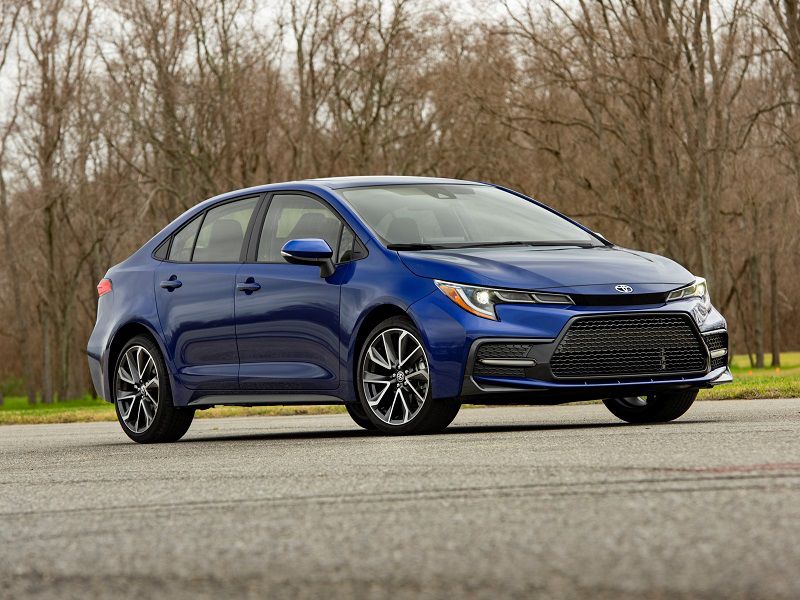
2020 Toyota Corolla sedan ・ Photo by Toyota
While many auto industry observers say the passenger car is dying as Americans turn to crossover SUVs, hundreds of thousands of consumers are still buying compact cars each year. What they are discovering is today’s compacts offer more room, more comfort, more features, and more choices than ever before. The subjects of this comparison epitomize all that. The Toyota Corolla has been one of the world's bestsellers for decades, and the Hyundai Elantra has been a mainstay for Hyundai for decades as well. The all-new-for-2021 Hyundai Elantra is this year’s North American Car of the Year, and it is available in three trims — the conventional Elantra, the performance-oriented Elantra N Line, and the first-ever Hyundai Elantra HEV hybrid sedan. For the Toyota Corolla, you have the conventional Corolla sedan, the Corolla Hybrid, and the Corolla Hatchback that uses a different platform. With relatively low purchase prices, excellent interior room, roomy cargo areas, pleasant driving characteristics, and excellent fuel economy, both the Corolla and the Elantra offer many good reasons to buy a compact car.
Exterior Design
The 2021 Hyundai Elantra is the newer of the today's contenders, and it is also the most highly styled. It adopts the "four-door-coupe" look that has gained popularity, particularly among European luxury cars. The design has resulted in an Elantra that is longer, lower, and wider than the previous generation — and longer, lower, and wider than the current Corolla sedan as well. The Elantra is almost 2.0 inches longer than the Corolla sedan, and it is almost one inch shorter in overall height. While you might fear that the Elantra’s swooping roofline would result in poor rear-seat headroom, that is not the case. The Corolla sedan’s exterior design is more mainstream and conventional than the Elantra’s, and some will prefer its handsome simplicity versus the heavily styled Elantra. The Corolla hatchback, which in many ways is a different model than the sedan, also offers a cleaner design than the Elantra.
2021 Hyundai Elantra
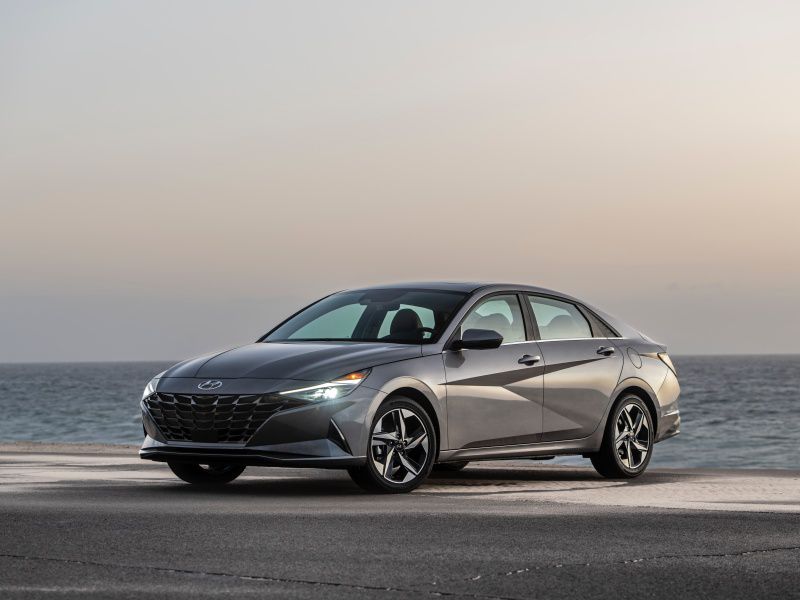
Photo by Hyundai
Interior Design
The interiors of small cars used to be referred to as "penalty boxes." That is certainly not the case anymore. Both the Toyota Corolla and Hyundai Elantra offer attractive and functional interiors with room for up to five adult occupants. Neither the Corolla nor the Elantra takes its interior to the upscale level of the new Nissan Sentra in its highest trim level, but both are well-designed and don’t scream "economy car." Seating is comfortable and attractively designed in both vehicles; both offer a variety of trims that range from fairly simple to very upscale. Available 60/40 split-folding rear seats are available in both the Corolla and the Elantra, aiding cargo hauling. Leather seats are offered in upscale trims of the Elantra and the Corolla Hatchback, while the top-trim Corolla sedan has a leatherette interior that looks like leather. Infotainment screens dominate the dash in the two vehicles, and the sizable screens offer a great deal of information.
: 2021 Hyundai Elantra
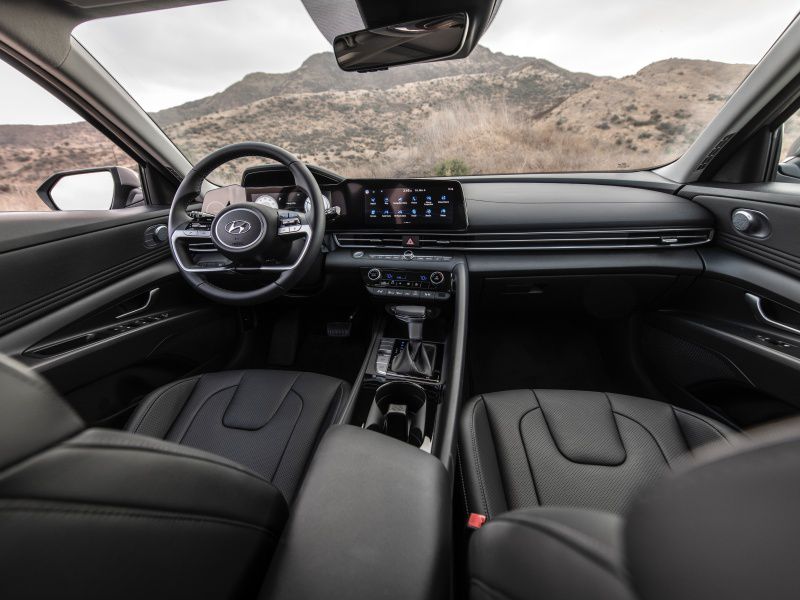
Photo by Hyundai
Infotainment
The 2021 Hyundai Elantra’s infotainment system is clear and easy to operate, in line with other systems from Hyundai. The base center-dash display is an 8-inch touchscreen, and the car features a “natural language” voice recognition system that does a good job of responding to your prompts. A wide variety of climate-control and other functions can be manipulated by the system. The uplevel Elantra Limited trim has a 10.25-inch screen and dedicated navigation, but it lacks the wireless Apple CarPlay and Android Auto offered with the 8-inch touchscreen system. Previous Toyota infotainment systems have had their issues, but the system in the Corolla cleared up those earlier shortfalls. Its Entune 3.0 audio system includes an 8-inch touchscreen, six speakers, Apple CarPlay compatibility, and Amazon Alexa. Easy-to-order packages tied to the trim levels provide even more sophisticated infotainment systems with premium audio and Android Auto capability.
: 2021 Hyundai Elantra
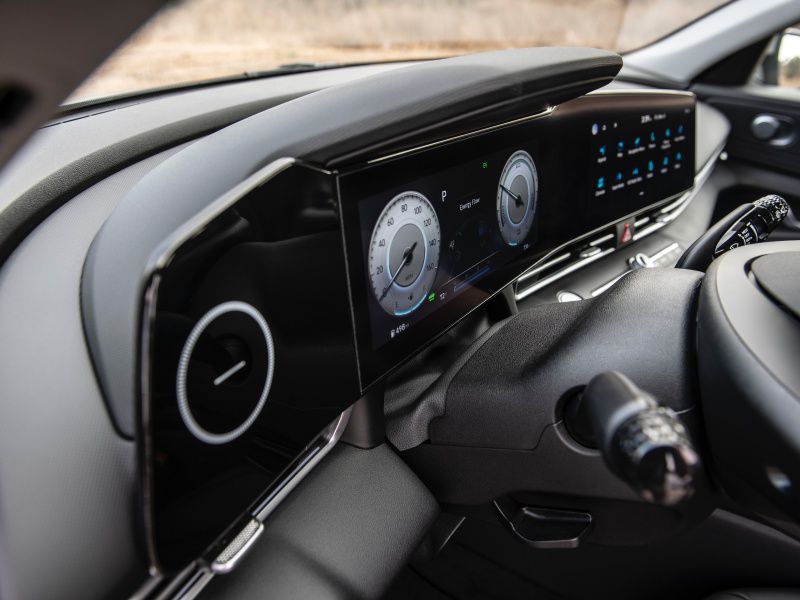
Photo by Hyundai
Powertrain Options
The 2021 Toyota Corolla offers two conventional engine choices, plus a hybrid powertrain. The 2021 Hyundai Elantra counters with two conventional engine choices, including a turbo 4-cylinder in the performance N Line, and a hybrid version of its own. The base Elantra engine is a naturally aspirated 2.0-liter 4-cylinder that produces 147 horsepower. The Elantra N Line features a turbocharged 1.6-liter 4-cylinder that delivers 201 horsepower. And the first-ever Elantra hybrid features a 1.6-liter Atkinson-cycle 4-cylinder engine, plus a permanent-magnet electric motor with a total system output of 139 horsepower. Interestingly, the Elantra HEV uses Hyundai’s 6-speed, dual-clutch transmission.
The base engine in the Toyota Corolla is a naturally aspirated 1.8-liter 4-cylinder that offers 139 horsepower. Some uplevel models including the Corolla Hatchback are equipped with a naturally aspirated 2.0-liter 4-cylinder engine that has 169 horsepower. The Corolla Hybrid uses a 1.8-liter four-cylinder gasoline engine teamed with two motor generators. The combined system output is 121 horsepower. Both continuously variable automatic transmissions and “smart” manual transmissions are offered in the naturally aspirated Corolllas depending upon engine and trim.
: 2021 Hyundai Elantra
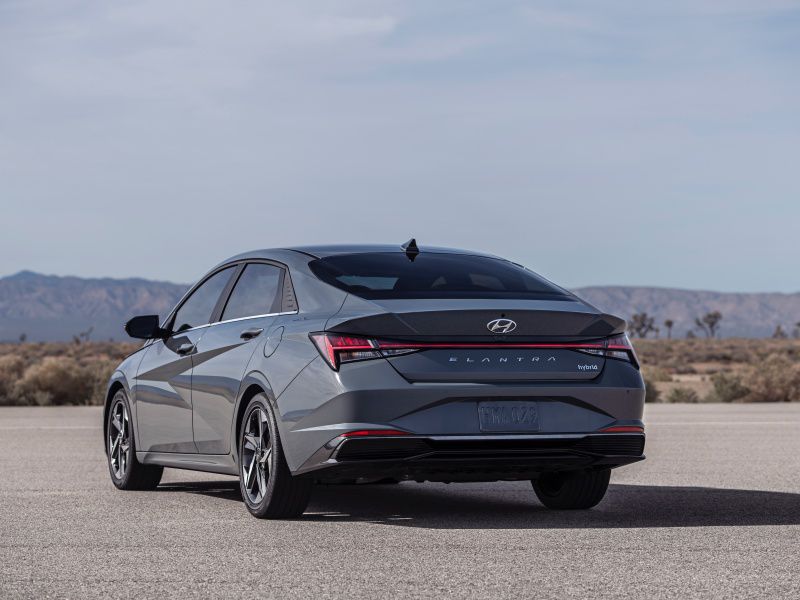
Photo by Hyundai
Driving Impressions
With the base engines, the Toyota Corolla and Hyundai Elantra accelerate and handle like you would expect. They are pleasant, comfortable, and economical without much in the way of sporting pretension. The same is largely true for the hybrid versions of both vehicles, although they each have multi-link rear suspensions that their conventionally powered siblings lack. Both are pleasant and responsive enough to suit most drivers very well. Then you have the various Corolla models, like the Hatchback and Apex sedan, that feature the 169-horsepower engine. With the 6-speed "Intelligent Manual Transmission" that features automatic rev-matching, these are involving cars with capabilities that would put some sports sedans of a decade ago to shame. Beyond that, there is the 201-horsepower Hyundai Elantra N Line that can be had with a 6-speed manual transmission when it arrives later this year. It promises to be the most performance-oriented vehicle in this review.
: 2021 Hyundai Elantra
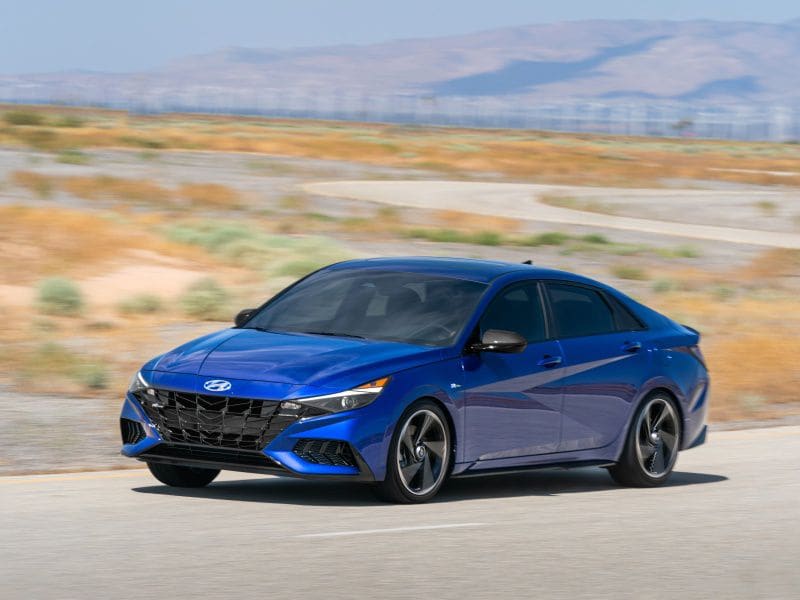
Photo by Hyundai
Safety and Driver Aids
Toyota led the way in equipping its vehicles with a robust collection of electronic safety and driver-assistance technologies. So it is no surprise the 2021 Corolla offers Toyota Safety Sense 2.0 that includes an automatic braking pre-collision system, full-speed adaptive cruise control with auto-stop, lane departure warning with steering assist, and lane-centering assist. In addition, the Corolla has automatic high-beam headlight control and road sign recognition. Hyundai’s answer to Safety Sense 2.0 is an array of technologies it calls SmartSense. Included among the standard features in the package are forward collision-avoidance assist with pedestrian detection, lane-keeping assist, lane-following assist, and driver attention warning. Blind-spot collision avoidance assist, rear cross-traffic assist, automatic high-beam headlight control, and safe exit warning are also standard. Both vehicles have a comprehensive number of airbags and other passive safety gear.
: 2021 Toyota Corolla
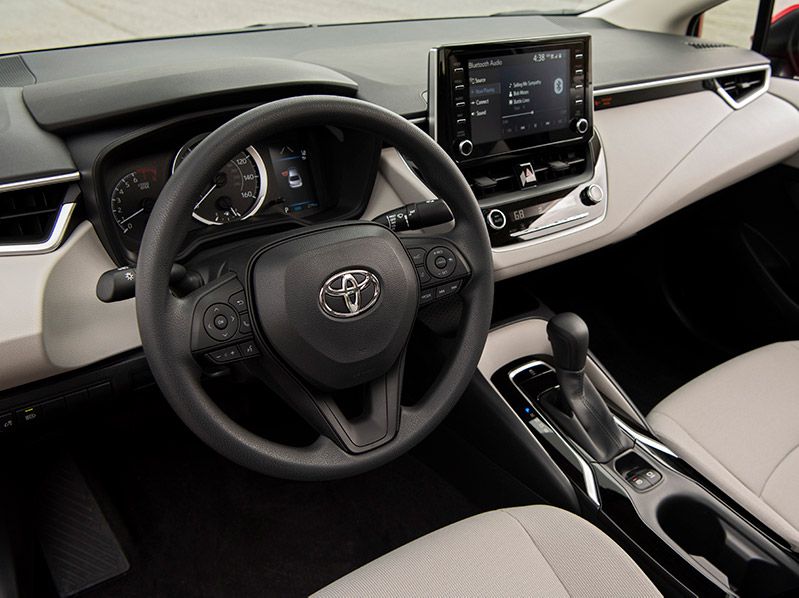
Photo by Toyota
Interior and Cargo Space
Because it is longer and wider than the Corolla and the Corolla Hatchback, the Hyundai Elantra delivers excellent interior space and good cargo-carrying ability. It is more than an inch longer and an inch wider than the Toyota Corolla and a full 12 inches longer than the Corolla Hatchback. This results in added interior space including slightly more front legroom and significantly more rear legroom than most compacts. The Elantra offers 99.0 cubic feet of passenger space while the Toyota Corolla offers 89.0 cubic feet. The Elantra’s maximum trunk space is 14.2 cubic feet, a little more than a cubic foot larger than the Corolla sedan. The Corolla Hatchback is the big winner in the cargo department with 17.8 cubic feet of space. If you don’t use the rear seats much, you probably won’t notice much of a difference, but the Elantra’s added rear legroom makes its rear passenger seat more comfortable.
: 2021 Hyundai Elantra
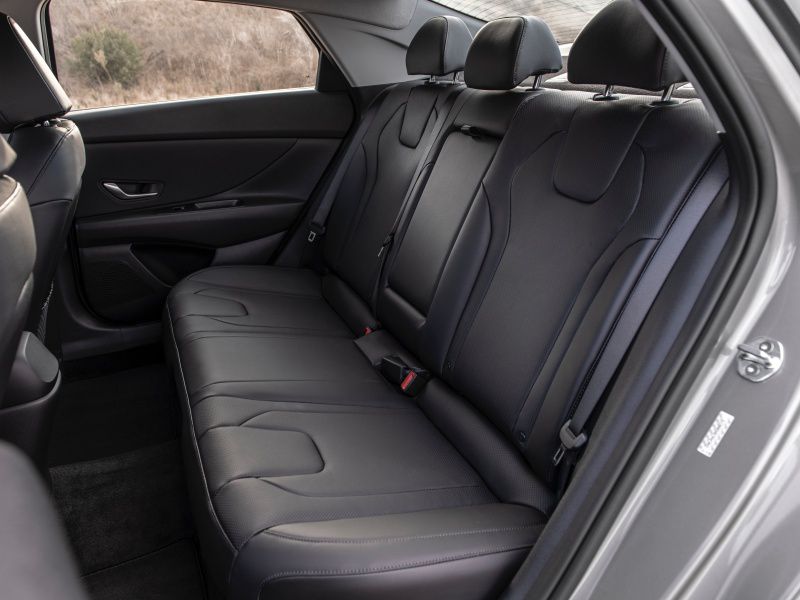
Photo by Hyundai
Fuel Economy
If you’re looking for excellent fuel economy, you’ve come to the right place in the Toyota Corolla and the Hyundai Elantra. The most fuel-efficient conventional Corolla offers an EPA rating of 31 mpg in the city, 40 mpg on the highway, and 34 mpg combined. The Hyundai Elantra tops that with EPA fuel economy ratings of 33 mpg city/43 mpg highway/37 mpg combined. Fuel economy for the most fuel-efficient Elantra HEV model, the Blue trim, is 53 mpg city/56 mpg highway/54 mpg combined. The Limited trim with larger tires and added equipment is EPA-rated at 49 mpg city/52 mpg highway/50 mpg combined. The Toyota Corolla Hybrid has EPA ratings of 53 mpg city/52 mpg highway/52 mpg combined. In comparison, the hybrid Honda Insight has EPA ratings of 55 mpg city/49 mpg highway/52 mpg combined. The most fuel-efficient version of the Corolla Hatchback, the Nightshade Edition with a CVT transmission, turns in EPA numbers of 32 mpg city/42 mpg highway/36 mpg combined.
: 2021 Hyundai Elantra
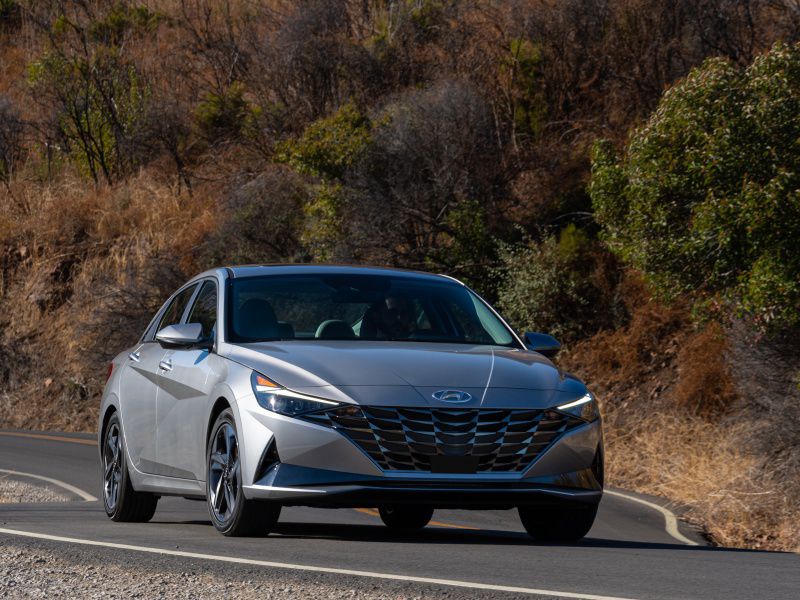
Photo by Hyundai
Pricing and Value
Certainly, cost is important in assessing value. The least expensive Elantra has an MSRP of $19,650 plus a $1,005 destination charge. The lowest-priced Corolla has an MSRP of $20,025 with a destination charge of $995. The least expensive Elantra HEV (hybrid) has an MSRP of $23,550 plus a $1,005 freight cost; the top-level HEV Limited version has a suggested retail price of $28,100 plus the same freight charge.
The base 2021 Corolla Hybrid LE has an MSRP of $23,600 plus a $995 destination charge. The 2021 Corolla Hatchback has a base price of $20,715 plus a $995 destination charge. The conventional Elantra Limited has a base price of $25,450 plus freight, and the base Hyundai N Line is slightly less expensive. The new Corolla Apex XSE has an MSRP of a little more than $28,000.
: 2021 Hyundai Elantra
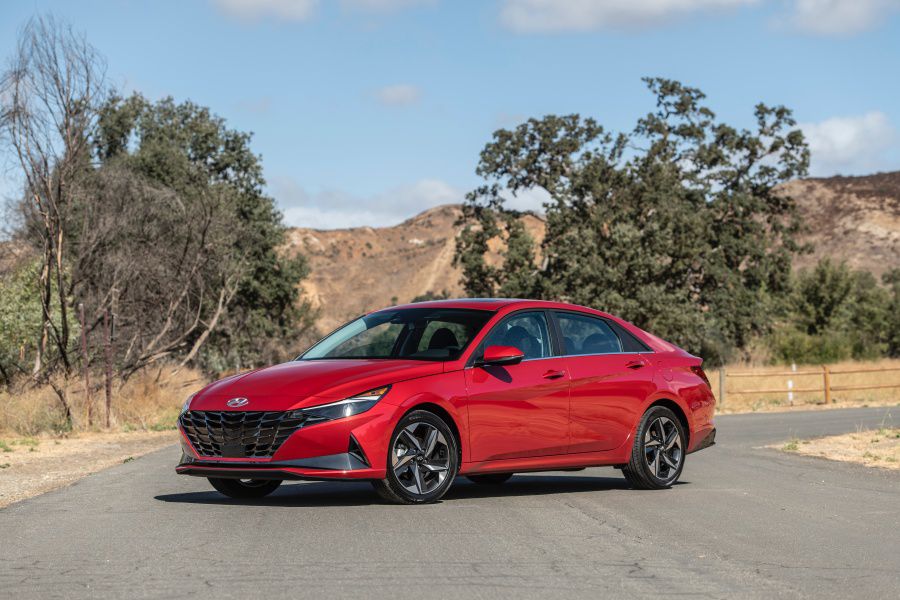
Photo by Hyundai
The Winner — Hyundai Elantra
In any comparison in which the Toyota Corolla is involved, it is hard not to choose it. The model's values are extremely well-known — solid reliability, strong resale value, and excellent safety systems. The same can certainly be said about the current Toyota Corolla.
But the Hyundai Elantra has many advantages as well, and for the 2021 model year, it is all new. Available in three distinct versions — one conventional, one sports-oriented, and one fuel-conscious hybrid — it gives the car buyer some excellent choices. With its lengthy warranty, expressive style, and commodious interior, the 2021 Hyundai Elantra is our pick in this comparison.
: 2021 Hyundai Elantra
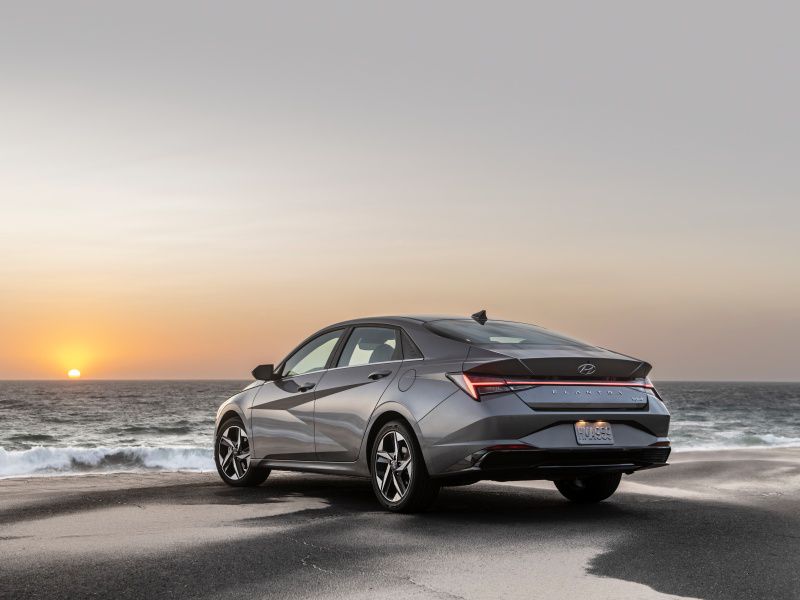
Photo by Hyundai